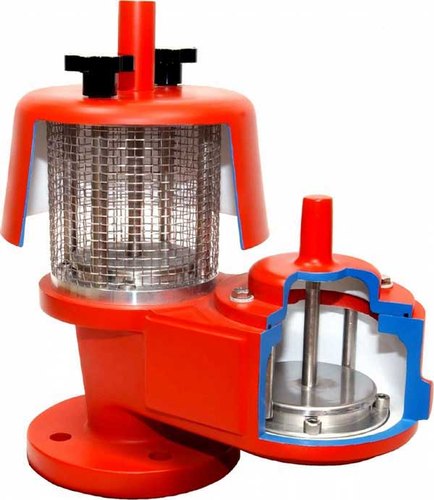
Pressure / Vacuum Relief valves are employed where it is necessary or desirable to reduce evaporation of tank contents to atmosphere. These vents are generally designated as the conservation type. They are typically mounted to a flange or pipe that connects to the vapor space (space within the tank that is above the liquid surface) of a storage tank. The pressure in this vapor space increases or decreases as liquid is pumped into or out of the tank, respectively. Atmospheric temperature changes cause an expansion or contraction of the vapors in this space, again resulting in pressure increases or decreases.
These vents are factory set to your specifications so that the pallet assemblies in the housings open when specific pressure and vacuum levels are sensed. The set points for these vents are achieved either by weight loading or spring loading of the pallet assemblies, depending on the setting required. The tank’s vapor space pressure/vacuum works in opposition to the force (weight or spring) applied to the pallet assemblies. Once the excess pressure or vacuum condition has been relieved, the pallet assemblies reseal automatically. The tank’s vapor space is always maintained within the safe range of its pressure and vacuum operating design limits.